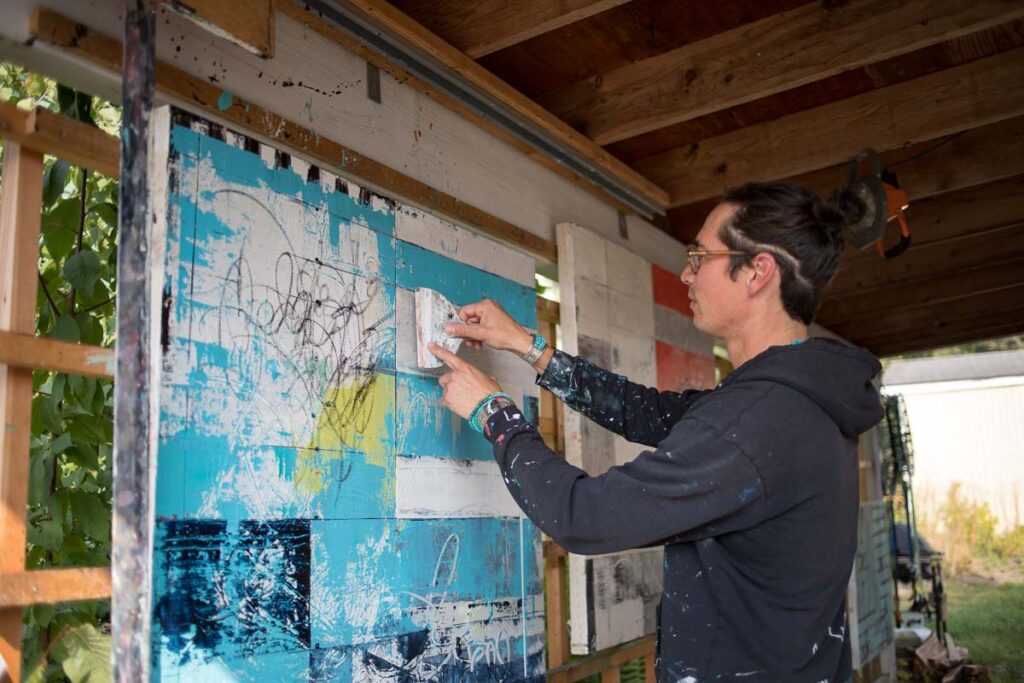
Redo (2019) by James Temte. Medium: Oil on Canvas. Size: 42 x 42 in (1 x 1 m). Cyrano’s Theatre Company, Anchorage, Alaska. Image courtesy of the artist.
- Redo (2019) by James Temte is an abstract piece that uses a combination of mostly white and blue colors to represent the interplay between processes of melting glaciers and rising sea levels, respectively. The top right corner depicts the thunderbird symbol, which according to the artist “provides a watching gaze over our changing world.”
- Temte’s elements of artistry are inspired by different aspects of his Indigenous heritage. Temte is a member of the Northern Cheyenne Tribe and as a painter and muralist he has worked to promote community involvement through creativity and art among various Indigenous communities in North America:
- “If we can reflect culture and heritage and traditions, even if it’s just designs in a mural, I think it supports people with their identity and it can help them stand up a little taller and really make a positive impact and a positive change in a lot of these communities that are dealing with really hard issues.” —James Temte

Temte in the process of creating Redo in Anchorage, Alaska (from Artistic Allies, 2019).
How is this related to climate?
- Redo acknowledges humanity’s lack of strong and adequate response to curbing climate change. According to the artist, the main message of the piece is that “we need a Redo on our climate change response,” as Alaska’s summer temperatures reached record breaking levels in 2019.
- One of the main consequences of ongoing climate change is melting of glaciers as a result of global warming. With melting glaciers, global sea level is rising and impacting coastal communities world wide. Indigenous communities in Alaska are severely impacted by climate change. Melting ice and heavy rains over the course of the last 40-50 years, for example, disrupt traditional hunting methods by diminishing wildlife populations and melting away the grounds that were once safe to live and hunt on.
- People from the Inupiat tribe in the coastal town of Nome, Alaska were able to notice the signs of climate change even before researchers and scientists had a name for them. These signs included the changing ice conditions, the frequency of earlier winters, colder spring temperatures, and soil erosion due to melting ice and rising sea levels.
References and additional resources
- “Interview with Painter + Muralist James Temte.” Artistic Allies, 22 Oct. 2019, https://artisticallies.com/interview-painter-james-temte/
- “James Temte – ANTHC APU Project Manager.” Alaska Pacific University,” https://www.alaskapacific.edu/people/james-temte/
- Robinson, M. “Climate Change: Is There Hope for Indigenous Alaskans.” Rotary, https://www.rotary.org/en/climate-change-there-hope-indigenous-alaskans#:~:text=As%20the%20cycle%20continues%20and,eating%20away%20at%20the%20land.
